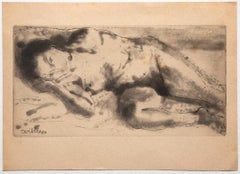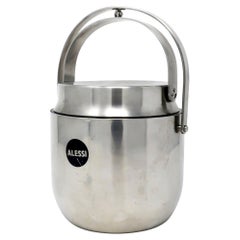Carlo Vitale
1940s Modern Figurative Prints
Etching
Vintage 1980s Italian Barware
Steel
Late 20th Century Italian Post-Modern More Dining and Entertaining
Stainless Steel
Carlo Vitale For Sale on 1stDibs
How Much is a Carlo Vitale?
Vitale 1913 for sale on 1stDibs
Over four generations of jewelry makers, Vitale 1913 transformed from a humble diamond trading company into a fine jewelry brand prioritizing ethically sourced jewelry made of striking materials like coral. With over 30 years of working with esteemed jewelry brands including Bvlgari, Damiani, Chopard, Cartier, H.Stern and Gucci, Vitale 1913 is at the leading edge of environmental action, social justice and fine jewelry.
Vitale 1913 began with Felice Scorcione, who in the early 1900s founded a jewelry company in the jewelry hub of Valenza, Italy. Subsequent generations oversaw the company and expanded its prestigious reputation first in Southern Italy, then around the world.
Scorcione’s great-grandson, Alberto Vitale, became CEO in 2008 and moved the company to Monaco. Vitale 1913 continues to produce jewelry in Italy, celebrating the family’s heritage and honoring tradition.
With the Prince Albert II Foundation of Monaco, Vitale 1913 raises ecological awareness by creating jewelry from coral that has been naturally destroyed by volcanoes. Portions of the proceeds from its Ocean Treasures collection support the foundation. Coupled with a conflict-free sourcing policy, which ensures diamonds are ethically sourced and not related to illicit trafficking or employee abuse, Vitale 1913 is a proponent of change in luxury jewelry.
On 1stDibs, find a collection of Vitale 1913 rings, earrings, necklaces and more jewelry.
A Close Look at Contemporary Jewelry
Contemporary jewelry is inextricably linked with the moment in which it is created, frequently reflecting current social, cultural and political issues such as environmental consciousness, identity and sustainability. It’s informed by fashion trends, from the chokers of the 1990s to the large chain necklaces of the early 2000s.
Jewelry is one of the oldest forms of adornment. Lockets made of silver or gold have been treasured gifts for hundreds of years, for example, and charm bracelets, which have existed since prehistoric times, didn’t become especially popular until the 19th-century reign of Queen Victoria. For many centuries, fine jewelry was used primarily to express wealth or status through lavish materials. Then, in the 1960s, a concept known as the “critique of preciousness” emerged, with jewelers creating pieces that did not get their value from gemstones or precious metals. Instead, it was the jeweler’s artistic vision that was prized and elevated.
This shift still informs Contemporary jewelry being made by artists today. Whether they are using cheap, found materials and working with provocative geometric shapes or seeking out the rarest stones, they are imbuing their work with meaning through their skills, techniques and ideas. Innovative designers such as Elsa Peretti, who popularized sculptural sterling-silver jewelry for Tiffany & Co., and David Yurman, who twisted metal into the simple yet striking Cable bracelet, have also influenced the direction of Contemporary jewelry’s forms and aesthetics.
Meanwhile, technological advancements like metal alloys and laser engraving have led to new possibilities in jewelry design. Now, edgy makers and brands as well as minimalist designers are pushing Contemporary jewelry forward into the 21st century.
Find a collection of Contemporary rings, earrings, necklaces and other jewelry on 1stDibs.


